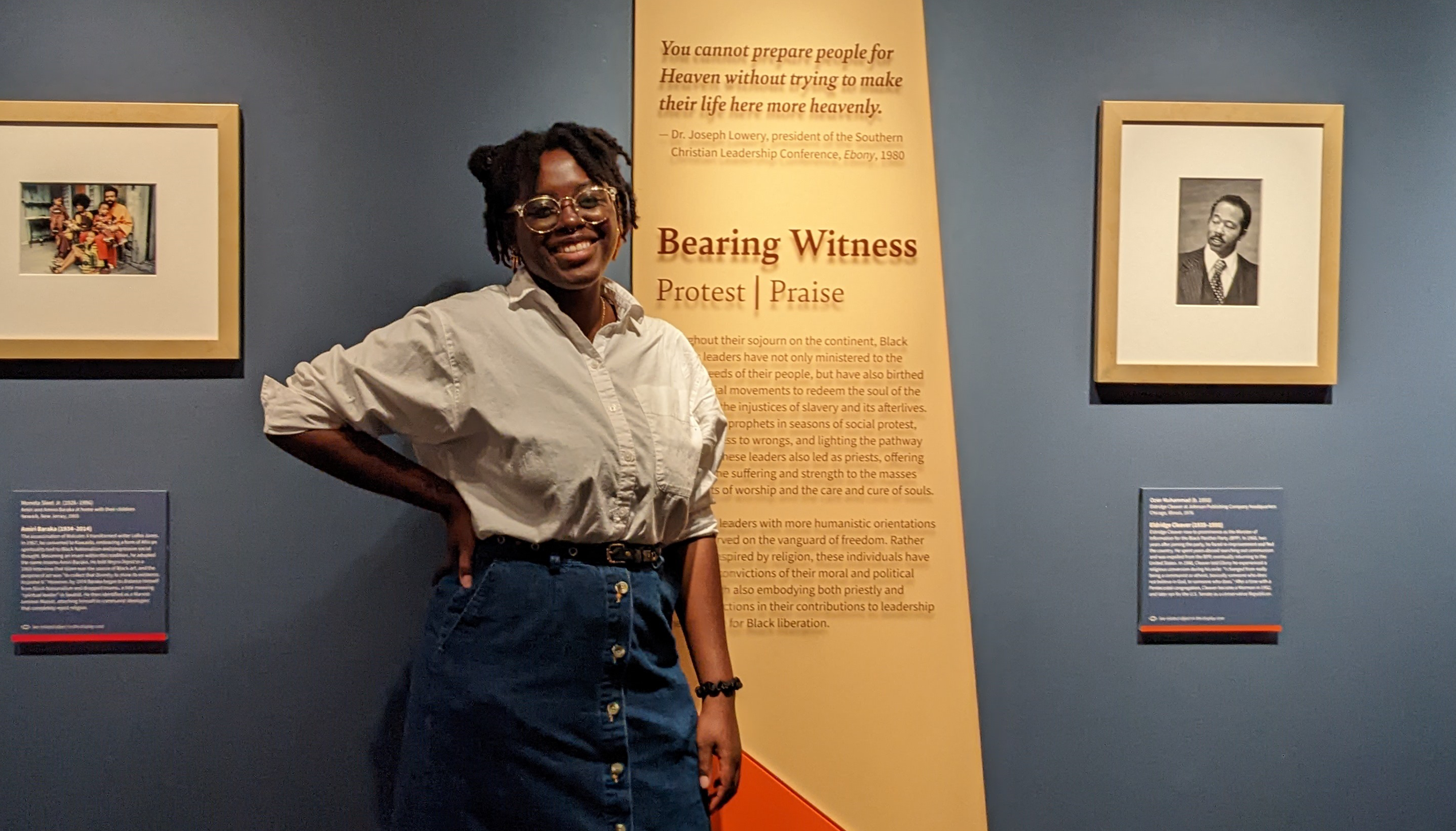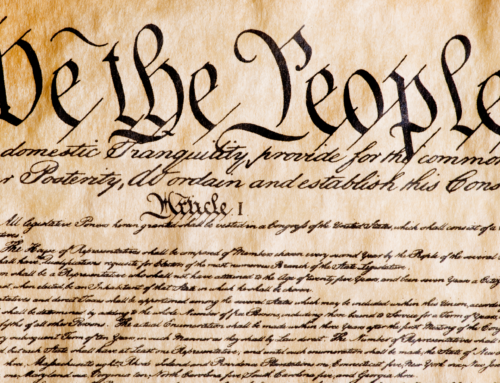By Christian TeBordo
As she prepared to graduate from Rensselaer Polytechnic Institute this spring, Games and Simulation Arts and Sciences major Sarah Mirekua ’23 was considering what to do next. She’d been interested in video games since she was a girl playing Stardew Valley and League of Legends. Thanks to her education, she was ready for the industry, with extensive training in 3D modeling, animation, drawing, and rigging.
She was already interviewing with local and national game studios, but she was also considering branching out into other creative fields. Fortunately, she had some additional experience to help her stand out from the crowd of recent graduates – Mirekua’s work is already hanging in the Smithsonian.
It all started with an internship at the National Museum of African American History and Culture. Mirekua grew up in the Washington, D.C., metropolitan area, and she had fond memories of the Smithsonian Institution. When she saw the notice of a graphic design internship, she applied. While her focus at Rensselaer was 3D animation, she had the prerequisite coursework for the position and was confident in her abilities. When she was offered it, she didn’t hesitate.
Still, it was her first time in a professional creative environment, and the transition was not easy. “I knew how to do design and typography,” she says, “but I was the only exhibition design intern, and I was nervous about taking risks.”
She soon realized that her supervisors genuinely cared about her opinions, and they encouraged her to express them confidently. As she took on more responsibility, that confidence grew. Her internship culminated in the design of a display case highlighting the museum’s library collection.
“Once it came together,” she says, “watching them place the display on the wall, having been allowed to make my own calls, I was really proud.”
The museum’s permanent staff were impressed, too, enough that when her internship ended, they offered her an ongoing position as a contractor. They had a major exhibition planned, and they believed Mirekua would be the perfect designer for it.
At one point, the Johnson Publishing Company was the largest Black-owned publishing firm in the United States. Their pioneering magazines, which included Ebony and Jet, featured some of the most iconic photos of Black artists, intellectuals, entertainers, athletes, and politicians. These publications are credited with being among the first to portray African Americans as they saw themselves.
When, after 75 years, the company was liquidated, the Ford Foundation, the Getty Trust, the MacArthur Foundation, the Mellon Foundation, and the Smithsonian Institution purchased its archive of over four million artifacts in order to preserve its historic legacy.
The National Museum of African American History and Culture and the Getty Research Institute now own the archive jointly, and they’re working together to catalog and digitize it so that these important documents will be widely accessible for coming generations.
The most notable of these objects and images were curated into the exhibition Mirekua designed: “Spirit in the Dark: Religion in Black Music, Activism, and Popular Culture.”
It’s an important topic, particularly as the timespan the exhibition covers includes the Civil Rights era, the Vietnam War, the birth of rock and roll, and the integration of professional sports. The exhibit includes candid photographs of celebrities and leaders like Maya Angelou, Malcolm X, Tina Turner, and Mohammed Ali, as well as artifacts like a King James Bible owned and annotated by Little Richard, handwritten speech notes by James Baldwin, and a typewriter from the Nation of Islam’s Temple No. 7. Many of these are being displayed for the first time.
Bringing all of this together was a big responsibility, but Mirekua had found her proverbial voice and was ready for the challenge. “To have that kind of freedom to lend my ideas and skills was a great opportunity,” she says. She points out that GSAS’s emphasis on teamwork helped her navigate the process of working with museum administrators, curators, and writers.
The exhibition opened in late 2022 to rave reviews. The Georgetowner described it as “like walking through a documentary film.” The Washington Post said that it “highlights all the tensions, contradictions and questions religion fosters, many of which have led to some of the country’s most provocative and profound creativity and activism.”
But Mirekua isn’t the type to rest on her laurels. She’s also been experimenting with screen printing, jewelry design, and textile art. “I know it’s unusual for someone who thinks of themself as a fine artist to get their degree at a polytechnic,” Mirekua acknowledges, “but the skills I’ve learned in my classes inform my interests. I want to use a creative career to help me follow my passions.”
You’re sure to be seeing more from Sarah Mirekua in the future, because she accepted an offer before graduation to continue working with the museum full-time. But for now you can catch Spirit in the Dark at the National Museum of African American History and Culture through November 2023.


